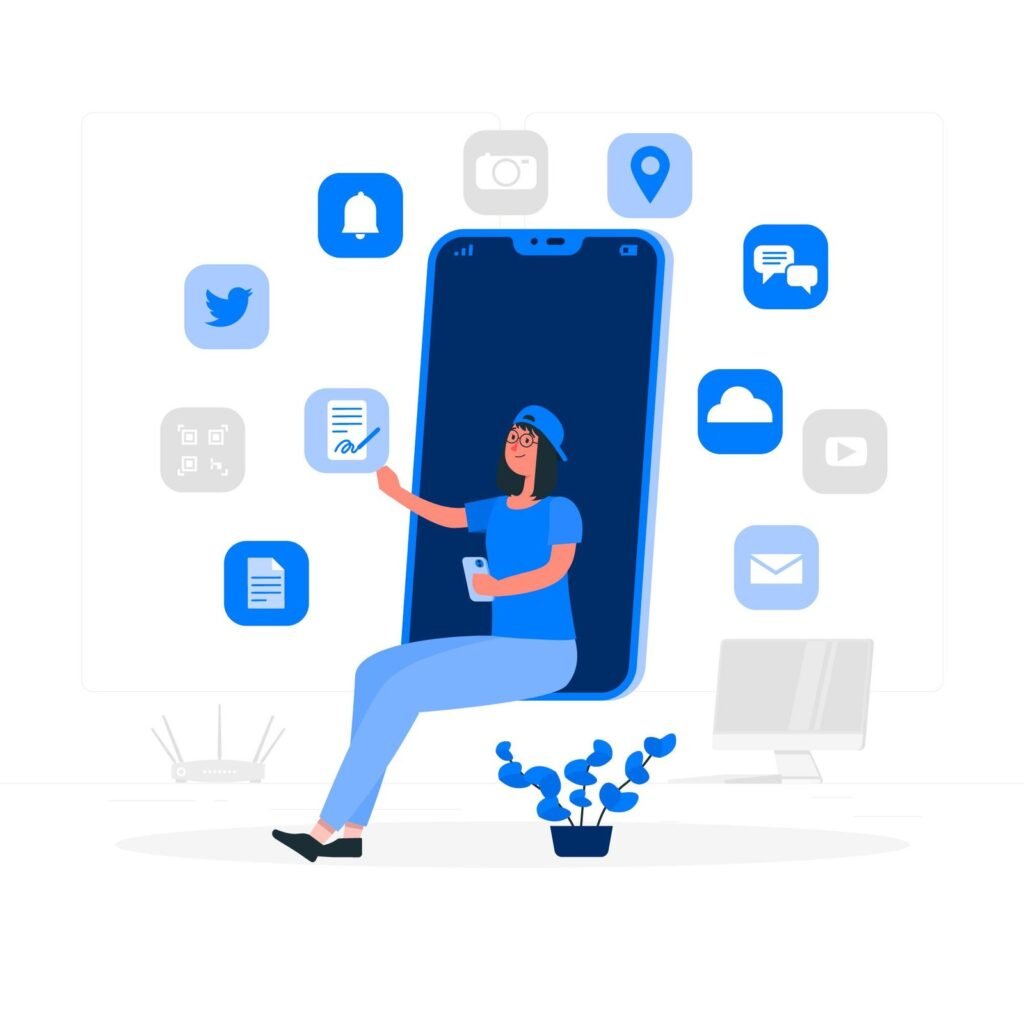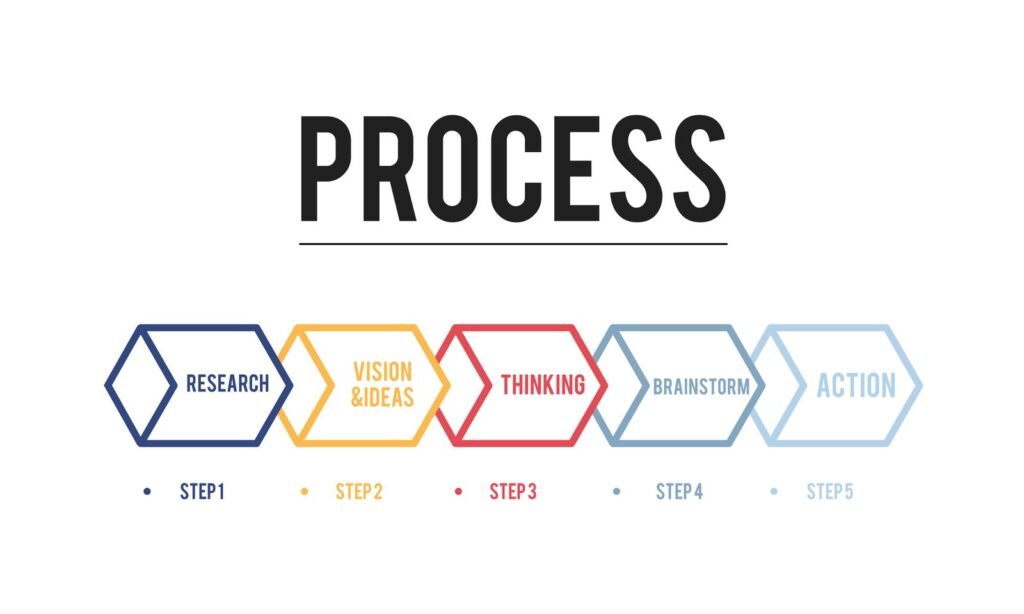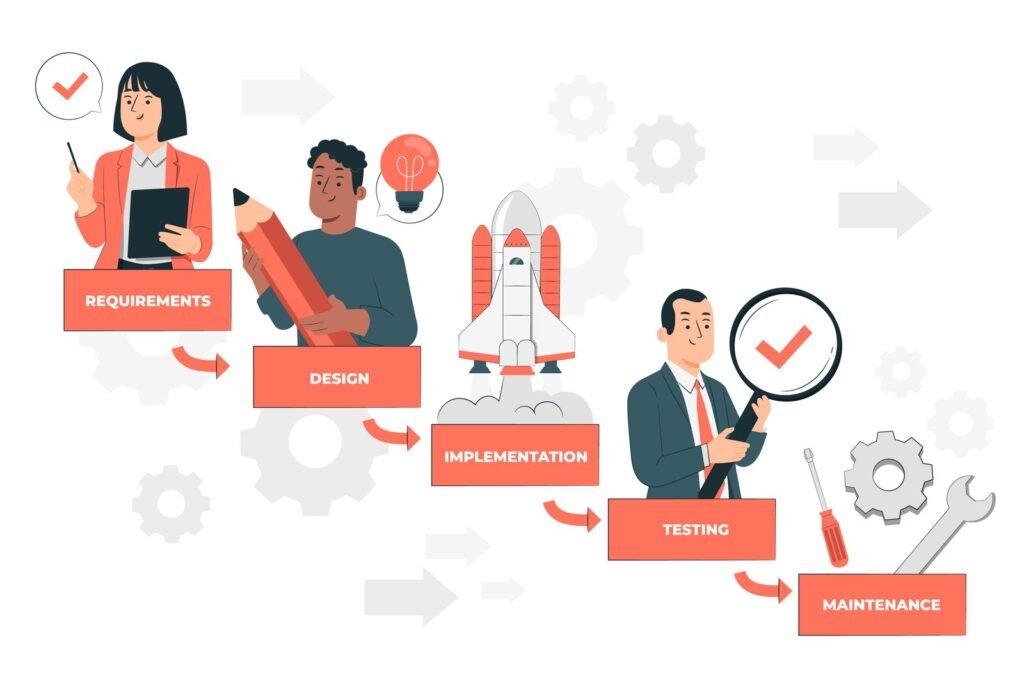Table of Contents
Toggle1. Mobile App Development in 2024
Every new dawn brings new changes in technological era, there has been an enormous expansion in every sphere owing to technological growth. Similarly, Mobile App development is likely to touch another pinnacle of growth in years to come. In 2024, new trends and technological breakthroughs will likely generate considerable changes in the ever-changing field of mobile app development. It is anticipated that as 5G networks continue to spread, they will redefine the possibilities for mobile applications, opening up new avenues for faster data transfer rates and facilitating the seamless integration of high-quality multimedia content. Mobile apps are expected to be crucial in enabling control and communication amongst networked devices as the Internet of Things (IoT) ecosystem grows, improving user experiences in smart homes, healthcare, and other industries. It is projected that AR and VR will become increasingly more popular as smart phone apps integrate immersive experiences for gaming, learning, and even virtual commerce. The way users interact with information and services will be revolutionised by applications that can deliver personalised and context-aware interactions thanks to the development of more advanced Artificial Intelligence (AI) algorithms. Developers will continue to be driven by worries about privacy and security, which will force them to incorporate strong security features like biometric authentication and powerful encryption. Additionally, as cross-platform development frameworks become more widely used, the process of creating apps will get more efficient and developers will be able to produce programmes that function flawlessly across a variety of operating systems.
The need for mobile app development firms around the globe is growing, as so many apps are increasingly crucial to our everyday life. By 2024, a number of cutting-edge features and technologies will shape the way cellular packages are constructed. With topics including in-demand skills, era qualities, and monetization tactics, this blog aims to serve as a comprehensive guide to the condition of mobile app improvement in the upcoming year. This blog will work as a simple but straightforward comprehensive guide to mobile app development in approaching year that is 2024.
2. Benefits of Mobile Apps

Increase in the trend of mobile app usage can be credited to plethora of reasons that are helping to surge business. The top most reasons include 24/7 accessibility, convenience, reliability, data security, offer connectivity and so on. Thanks to its many advantages for users and businesses alike, mobile apps are increasingly being used and integrated into several facets of daily life. Here are a few main advantages:
Handiness and Availability: Users of mobile apps can easily access products, services, and information at any time and from any location. In the fast-paced, always-on world of today, accessibility is especially important.
Improved User Experience: Mobile apps with good design have an easy-to-use UI, simple navigation, and a smooth user experience. User engagement and satisfaction rise as a result.
Individualization: Mobile apps have the ability to customise features and content according to user choices and activity. By providing relevant and customised information, this personalization improves the user experience.
Functioning Offline: Numerous mobile applications have offline capability, enabling users to access specific features or material even when their internet connection is not active. This is particularly helpful in places where connectivity is spotty.
Push Alerts: Users can receive push notifications from apps to remind them of changes, special offers, or other pertinent information. Maintaining brand recognition and user engagement are aided by this straightforward communication.
Integration of Device Features: Mobile apps can offer sophisticated functionality by utilising device features like the GPS, camera, and sensors. Features like location-based services and augmented reality are made possible by this integration, which also improves user experience.
Brand Awareness and Recognition: Brand visibility is increased by being present on users’ mobile devices through applications. App icons reinforce brand familiarity and loyalty by acting as continual reminders.
Effective Interaction: Mobile apps provide companies with a quick and easy way to communicate with their clients. Chat bots for customer service and in-app messaging are examples of features that improve assistance and communication.
Prospects for Monetization: Companies can generate extra income by monetizing mobile apps in a number of ways, such as through in-app purchases, subscriptions, adverts, and online sales.
Data insights and analytics: Through the usage of mobile apps, businesses may gather and analyse valuable user data, including trends, preferences, and behaviour. Improvements and strategic decisions can be guided by this data-driven understanding.
Enhanced Output: Business-oriented mobile apps can increase efficiency by providing tools for communication, project management, and teamwork. This is especially helpful in situations involving mobile or remote workers.
Building Communities: Through user-generated content, discussion boards, and social features, apps can help users feel more connected to one another. Creating a community in the app store can boost user loyalty and engagement.
Thus, mobile applications are a crucial component of the contemporary digital world since they offer a multitude of benefits, from enhanced user experiences to corporate growth potential.
3. Types of mobile app development
A variety of techniques and technologies are used in mobile app development to provide applications for mobile devices. There are three main categories for developing mobile apps:
Creation of Native Apps: Using platform-specific programming languages (Java or Kotlin for Android, Swift or Objective-C for iOS), native apps are created and developed for a particular mobile operating system (OS), such as iOS or Android.
Benefits
- Improved performance because the software is designed specifically for that platform.
- Access to all features and functionalities of the device.
- Smooth interaction with the operating system, offering a dependable user interface.
Hybrid Cross-Platform App Development: The development of cross-platform apps involves utilising a single codebase that is compatible with various platforms, such as iOS and Android. They are created using web technologies like JavaScript, HTML, and CSS, and are subsequently enclosed in a native container.
Benefits
- Code reuse, which allows for cross-platform use of a single programme.
- Time and money well spent on development.
- Updates and maintenance are made easier because they affect all platforms at once.
Development of Progressive Web Apps (PWAs): PWAs are progressive web apps that use contemporary web technologies to provide an app-like experience through a web browser. Any device with a suitable browser can access them.
Benefits:
- PWAs are cross-platform compatible, meaning they can be used on any device that has a browser.
- There is no installation required, which lowers user friction.
- For a flawless user experience, responsive design with offline functionality is used.
- Development of Mobile Web Applications:
In essence, mobile web apps are websites that have been tailored for mobile browsers. Users use their mobile devices’ web browsers to access them.
Benefits
- Platform independence: mobile web apps are compatible with any browser-equipped device.
- The application is simple for users to access because it doesn’t require installation.
- less complicated to create and maintain than native apps.
Development of Enterprise Mobile Apps: Enterprise mobile applications are made for internal use in businesses. They frequently include access to enterprise systems, communication tools, and business process automation.
Benefits:
- Increased output and streamlined company procedures.
- Game Creation: The primary goal of game creation is to produce entertaining and engaging mobile games for players. It involves specific tools, engines, and design ideas meant to be used in video games.
- Experiences that are interactive and immersive for users.
- Opportunities for in-app purchases, advertisements, or premium editions to generate revenue.
- Makes use of the powerful processing and high-quality graphics capabilities of contemporary mobile devices.
- The choice of mobile app creation depends on various aspects, including target audience, project needs, budget, and timeframe. Each style of app development has pros and downsides of its own.
4. Mobile App Development Process
Mobile app development is a process that requires skill and expertise. To develop a futuristic app that is designed with all latest features and gives a scope of future updates needs proper planning and research. It requires step wise planning:

4.1 Planning and Research
Before commencing with app designing Idea and background research is the first step. Clearly outline the purpose and goals of the app. Identify the problem it solves or the value it provides to users.
Market research: Market Research is crucial conduct research to understand the target audience, competition, and market trends. Assess the technical and financial feasibility of the app idea.
Define Features and Functionality: Create a Feature List, outline the core features and functionalities the app will offer.
User Stories and Use Cases: Define user stories and use cases to understand how users will interact with the app.
4.1.1. Selecting the Best Platform for Developing Mobile Apps
Selecting the best platform for developing mobile apps is a critical decision that influences the app’s reach, user base, and overall success. The two major platforms are iOS and Android. Here are key considerations for each:
iOS: Target Audience: If your target audience consists mainly of users with iPhones, iPads, and other iOS devices, developing an iOS app makes sense. iOS users are often early adopters of new technologies and are more likely to spend on app purchases and in-app transactions.
Monetization: iOS users tend to spend more on app purchases and in-app transactions compared to Android users. If your revenue model relies on in-app purchases or premium app pricing, iOS may be a lucrative platform.
Development Environment: iOS apps are typically developed using Xcode,
Android Market Share: Android has a larger global market share compared to iOS, making it a compelling platform for reaching a broad audience. If your goal is widespread adoption, especially in emerging markets, Android may be the preferred choice. Customization: Android provides more flexibility and customization options for developers. This can be advantageous if your app requires deep integration with the operating system or if you want to provide a highly customized user experience. Development Environment: Android apps are developed using Android Studio, and the primary programming language is Java or Kotlin.
Cross-Platform Development: Cost and Time Efficiency: If budget and time constraints are considerations, cross-platform development frameworks like React Native, Flutter, or Xamarin allow you to write code once and deploy it on both iOS and Android. This approach can reduce development costs and time-to-market. Uniform User Experience: Cross-platform development aims to provide a consistent user experience across different platforms. This can be advantageous if maintaining a uniform look and feel is a priority. Hybrid Apps: Web Technologies: Hybrid apps are built using web technologies (HTML, CSS, JavaScript) and then wrapped in a native container. They can run on both iOS and Android. Quick Prototyping: Hybrid apps are often used for quick prototyping or when the development team is familiar with web technologies. However, they may attain the same level of performance.
Hybrid Apps: Web Technologies: Hybrid apps are built using web technologies (HTML, CSS, JavaScript) and then wrapped in a native container. They can run on both iOS and Android. Quick Prototyping: Hybrid apps are often used for quick prototyping or when the development team is familiar with web technologies. However, they may not achieve the same level of performance as native apps.
User Demographics and Geography: User Preferences: Consider the preferences of your target audience. In some regions, one platform may be more popular than the other.
Demographic Factors: Age, income level, and lifestyle can influence the choice of mobile platform. For instance, iOS devices are often associated with a more affluent user base.
For instance, iOS devices are often associated with a more affluent user base.
4.2 Design and User Interface
Design and user interface (UI) play a crucial role in the success of mobile apps. A well-thought-out and visually appealing design not only attracts users but also enhances the overall user experience. Here are key considerations for design and user interface in mobile apps:
4.2.1 Design and User Interface in Mobile Apps
User-Centred Design: User Research: Conduct thorough user research to understand the target audience, their preferences, and pain points.
User Personas: Create user personas to represent the different segments of your target audience, helping guide design decisions.
User Journey Mapping: Map out the user’s journey within the app to identify key touch points and opportunities for improvement.
4.2.2 Visual Design
Branding: Ensure the app’s design aligns with the overall branding strategy, including the use of consistent colours, fonts, and logos.
Aesthetics: Prioritize a visually pleasing design that reflects modern design trends while staying true to the app’s purpose. Iconography: Design clear and recognizable icons that represent app features or actions.
Navigation and Information Architecture: Intuitive Navigation: Create a navigation structure that is intuitive and easy to understand, ensuring users can move through the app seamlessly.
Hierarchy: Establish a clear hierarchy for information, emphasizing the most important features and content.
Menu Design: Opt for user-friendly menus, considering options like bottom navigation bars or side menus based on the app’s complexity.
Interaction Design: Touch-Friendly Elements: Design touch-friendly buttons and interactive elements suitable.
4.3 Development Process
4.3.1Mobile App Development Tools and Frameworks
Mobile app development requires following a series of steps, the development process involves the use of the tools and the Frameworks. Before commencing development process it is important to choose the platform on which the app is to be developed, there are wide number of platform available these days , some of the predominant platforms used for development of the apps include:

Cross-Platform Frameworks
React Native: React Native is purposefully and popularly used platform which is developed by Facebook. This platform allows developing mobile apps using react and java script. It is conventionally used owing to its ability of a single codebase for both iOS and Android. React Native lets developers use JavaScript and React to create mobile applications. For the iOS and Android platforms, it enables the development of high-performance, native-like apps. Developers are able to share a significant amount of their software across platforms thanks to the framework’s “learn once, write anywhere” philosophy. A large community, a robust ecosystem of third-party tools, and React Native’s modular and component-based architecture all add to the platform’s appeal.
Flutter: Flutter’s popularity lies in its flexibility, it is a platform developed by Google. Uses Dart programming language. Flutter is maintained by a renowned community of global developers. Flutter is used for improving the app performance on any device. It offers a rich set of pre-designed widgets and high-performance rendering. Flutter uses Dart Language and makes use of many of the advanced features of the languages. In terms of performance and technology you can say flutter is leading in every sphere. Flutter is expected to have a great future owing its high performance and flutter developers are in great demand. With its aesthetically pleasing and adaptable widgets, Flutter distinguishes itself by enabling developers to design a unified and engaging user experience across many platforms. With the help of Flutter’s hot reload functionality and reactive programming style, developers can see the effects of code changes right away while they’re being developed. The framework is especially well-suited for creating stunning and highly customised user interfaces (UIs), which makes it a top option for applications that prioritise visual design
Xamarin: With only one codebase, developers can create native applications for Windows, iOS, and Android with the help of Microsoft’s cross-platform mobile app development framework, Xamarin. Using the distinct advantages of each platform, developers can create dependable, high-performing apps with C# and the.NET framework. Development time and effort are greatly decreased by Xamarin since it offers a shared codebase for business logic. Code completion, debugging, and testing are made possible by its interaction with Visual Studio, the official integrated development environment from Microsoft. This also speeds up the programming process. While Xamarin. Native enables platform-specific UI implementations, Xamarin. Forms enables developers to create a shared user interface across platforms.
Native Development for iOS (Object-C and Swift): Using programming languages like Objective-C or Swift, native development for iOS entails creating apps that are designed exclusively for Apple’s iOS operating system. Before Swift was introduced, the primary language used to construct iOS apps was Objective-C. With its smooth integration with Apple’s Cocoa and Cocoa Touch frameworks, Objective-C is an object-oriented programming language that provides a stable and advanced environment for creating iOS applications.
The latest APIs, frameworks, and hardware features are all available to developers using native programming for iOS, enabling them to fully utilise Apple’s ecosystem. With the help of Apple’s copious documentation and resources, developers can produce feature-rich, aesthetically pleasing apps. With features like Interface Builder, debugging tools, and extensive testing capabilities, using Xcode—Apple’s official integrated development environment (IDE)—improves the development process. In order to provide high-quality applications for iPhones, iPads, and other Apple devices, developers prefer native iOS development because it offers a deep integration with iOS devices, guaranteeing maximum performance and a smooth user experience.
Backend of a mobile app: Firebase: offers a range of cloud-based tools for developing web and mobile applications. It includes functions like hosting, authentication, and real-time databases, among others.
Amazon Enhance: A component of Amazon Web Services (AWS) used to create safe, scalable mobile and web applications running on the cloud.
Backend of a mobile app
Firebase: Offers a range of cloud-based tools for developing web and mobile applications. Includes functions like hosting, authentication, and real-time databases, among others.
Amazon Enhance: A component of Amazon Web Services (AWS) used to create safe, scalable mobile and web applications running on the cloud.
4.4 Features and Functionality
Once the purpose of the app is decided, deciding the features becomes a primary task and concern. An app would be considered worth using if it is providing the latest and up to date features. The app should not only provide the latest features but should also be safe and secure in every aspect.
4.4.1 Security Best Practices in Mobile App Development in 2024
In 2024, security will still be a crucial consideration for developing mobile apps due to the rapid advancement of technology and the rise in cyber attacks. For the creation of mobile apps in 2024, you may consider the following security recommended practises:
Encryption of Data: Most of the users give priority to the safety and the security of the data. Some of the safety measures that can be considered while developing an app are :
- Use end-to-end encryption to safeguard private information while it’s being transmitted.
- To protect data on the device while it is at rest, use robust encryption techniques.
- For further security, make use of platform-specific encryption libraries.
Safe Verification:
- Adapt multi-factor authentication to improve the security of user accounts.
- Implement salting and hashing techniques to store passwords securely.
- For an extra degree of user verification, think about biometric authentication.
Safe Communication with the Backend:
- For data security when communicating between the application and the backend servers, use secure communication protocols (HTTPS).
- In order to defend against man-in-the-middle attacks, use certificate pinning.
- How to Obfuscate Code and Harden Apps:
- Use obfuscation of codes to make
Safekeeping of Data:
- Make use of the platform’s secure storage capabilities to safely store sensitive data on the device.
- Steer clear of keeping needless sensitive data, and encrypt important information.
Access Controls and Permissions:
- Make sure that the app and all of its components have only the permissions that are required by putting the least privilege principle into practise.
- Review and update access controls frequently to prevent unauthorised users from accessing private information.
Safe Offline Capabilities:
- Put in place security mechanisms, like data synchronisation and safe local storage, for offline functionality.
- Encrypt the data that is kept locally on the device
User Privacy Observance:
- Respect privacy laws and get user permission before collecting and using data.
- Make sure users are aware of the app’s privacy policies.
The task of keeping mobile apps secure is continuous and calls for alertness to new dangers. Ensuring the protection of user data and upholding the integrity of mobile applications requires regular updates to security measures and keeping up with the newest security trends.
4.5 Testing and Quality Assurance
Once an app is built it is pertinent to test it to dig out its flaws, bugs and to remove them. Testing on variety of platforms checking its workability is the another crucial step in the process of building app. Q.A team is specifically deployed to check the app’s functionality, Testing and quality assurance team must give a go signal after testing and retesting so that the app can be launched. A testing procedure of an app follows specific steps and testing itself is of various types.
Types of Testing
Functional testing: Verifies that the features and functionalities of the app operate as intended through functional testing.
Usability testing: It assesses the overall usability, user interface, and experience of the application.
Performance testing: It verifies the application’s performance, responsiveness, and resource consumption in various scenarios.
Security testing: Finds holes in the software and makes sure it can withstand attacks.
Compatibility testing: Verifies that the application functions flawlessly across a range of hardware, software, and screen sizes.
Regression testing: Confirms that adding new features or updates won’t negatively affect already-existing functionalities.
Automated testing: This technique increases productivity by using scripts to automate tedious but essential testing procedures.
Mobile-Only Testing: Testing for device compatibility ensuring the programme runs properly across a range of devices, taking into account differences in screen sizes, resolutions, and hardware requirements.
Test Automation: Automates repetitive and time-consuming testing tasks to increase efficiency.
Utilizes frameworks like Appium, Selenium, or XCTest for mobile app test automation.
User Feedback and Beta Testing: Gathers feedback from beta testing and early releases to identify issues not detected during internal testing.
Utilizes analytics tools to monitor user behaviour and identify areas for improvement.
4.6 Launch, Deployment and Marketing
A mobile application’s launch, deployment, and marketing are crucial stages in the app development lifecycle. Launching requires careful app store submission, following rules, and using App Store Optimisation (ASO) to make the app search engine friendly. A well-thought-out soft launch may come before a more extensive release to gather consumer input and identify any problems. Strong backend infrastructure, scalable server solutions, and ongoing performance and user behaviour analytics monitoring are requirements for deployment. For a flawless user experience, quick problem fixes, frequent updates, and rapid feedback channels are essential.
Launch
Software Store Submission: To publish your software, go to the appropriate app stores’ websites (Google Play Store, Apple App Store).
Make sure your app abides with the rules and regulations set forth by the store.
App Store Optimisation (ASO): Make sure your app’s keywords, description, title, and images are search engine optimised. Use crisp pictures, videos, and app icons to highlight the capabilities of your software.
Soft Launch: Before a wider release, think about conducting a soft launch in a few select areas to get customer feedback and spot any possible problems.
Launch Event: Arrange a campaign or launch event to generate interest in your app. Announce the launching of your app via press releases, social media, and other platforms.
Deployment
Server Scaling: Verify that the anticipated user load on your backend architecture is manageable. Put auto-scaling techniques in place to handle increases in traffic.
Analytics and Monitoring: Install monitoring software to keep an eye on user activity, app performance, and possible problems. Utilise analytics to learn more about user engagement and make data-driven app improvements.
Updates and Bug Fixes: Resolve any defects or problems that users report as soon as possible. Release updates on a regular basis that include enhancements, new features, and problem fixes.
Feedback Channels: Give consumers a variety of ways to provide feedback, including social media, in-app questionnaires, and customer service.
Marketing
Social media: To advertise your app, make use of sites like Facebook, Instagram, LinkedIn, and Twitter. Make interesting material, place advertisements, and, if you can, work with influencers.
Content Marketing: Write blog entries, articles, or videos on the functions or market niche of your software. To improve visibility in search engines, apply SEO techniques.
Email marketing: Utilise your email list to launch focused advertising campaigns. Distribute updates, bulletins, and promos to your user base.
App Store Ratings and Reviews: Inspire happy customers to post gratifying reviews on app marketplaces. React to user input and constructively address bad reviews.
Collaborations and Partnerships: Establish alliances with companies or influencers that have the same goals as the intended user base for your app.Work together on joint promotions or co-marketing campaigns.
4.7 Post-Launch Maintenance and Updates
Updating and maintaining a mobile application after launch is essential to its long-term performance and success. Here’s a how-to for handling this stage:
Analytics and Monitoring: Use comprehensive monitoring tools, including as crash reports, error rates, and user analytics, to keep tabs on the app’s functionality. Analyse user involvement and behaviour on a regular basis to find areas that need improvement.
Bug Patches: As soon as possible, take care of and resolve any defects or issues that users report or that monitoring tools find. Provide bug-fix updates to keep the user experience enjoyable.
Security Updates:
Keep an eye out for any possible security flaws: Performance Apply security upgrades and fixes to safeguard user information
Optimisation: Based on analytics and user input, continuously improve the app’s performance. Take care of any problems pertaining to resource use, lag, or delayed loading times.
Compatibility with OS Updates: Make sure you have the most recent iOS and Android operating system (OS) updates installed. Make sure the app utilises new capabilities and stays compatible with updates to the operating system.
Improvements to Features: Prioritise product improvements based on user demand and industry trends after gathering user feedback. Provide updates that add features or enhance existing ones to maintain the app’s competitiveness.
4.8 Mobile App Monetization Strategies
A key component of converting app development efforts into long-term cash streams is mobile app monetization. App development company must opt different approaches accommodate different user preferences and business structures. The premium business model, which provides a finest edition with in-app purchases for additional features, is extensively used. In-app purchases, which are common in gaming and entertainment apps, let users purchase virtual products or upgraded features. Recurring revenue is generated by the subscription model, which charges consumers for continuous access to premium content or services. One frequent strategy is advertising, which can take many different forms, such as banners, interstitials, or native adverts.
Freemium Model: Provide a basic version of the programme for free. Through in-app purchases, you can charge customers for premium services or content.
In-App Purchases (IAP): Market in-app upgrades, virtual items, and extra features. Prevalent in apps for entertainment and gaming.
Subscription Model: Charge customers a regular price (monthly, yearly) to have access to exclusive products or services. well-liked for news, productivity, and media streaming apps.
Advertising: Run adverts inside the application. Banner advertisements, interstitials, native ads, and rewarded video ads are among the available options.
Partnerships and Sponsorships: Collaborate with companies to place products or arrange sponsorships inside the app.
4.9 Conclusion
To sum up, the thorough guide to developing mobile apps in 2024 emphasises how quickly technology is changing and how much users anticipate. Since mobile applications are always changing, a comprehensive strategy that takes into account not just development procedures but also the more general aspects of distribution, marketing, and post-launch maintenance is required. While native development for iOS and Android is still necessary to maximise user experiences, cross-platform frameworks like React Native and Flutter continue to provide effective solutions. In order to guarantee the dependability and security of mobile applications, it is stressed how crucial it is to implement rigorous testing and quality assurance procedures along with security considerations. Following launch, ongoing observation, incorporating user feedback, and providing timely updates turn into the cornerstones of preserving a competitive advantage. If trends are predicted and conscious attention is paid to the latest strategies a lot can be achieved by the app developers in the sphere of the app development.


